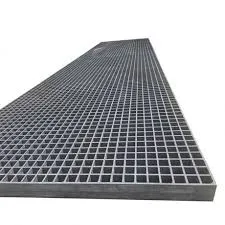
-
 Afrikaans
Afrikaans -
 Albanian
Albanian -
 Amharic
Amharic -
 Arabic
Arabic -
 Armenian
Armenian -
 Azerbaijani
Azerbaijani -
 Basque
Basque -
 Belarusian
Belarusian -
 Bengali
Bengali -
 Bosnian
Bosnian -
 Bulgarian
Bulgarian -
 Catalan
Catalan -
 Cebuano
Cebuano -
 China
China -
 China (Taiwan)
China (Taiwan) -
 Corsican
Corsican -
 Croatian
Croatian -
 Czech
Czech -
 Danish
Danish -
 Dutch
Dutch -
 English
English -
 Esperanto
Esperanto -
 Estonian
Estonian -
 Finnish
Finnish -
 French
French -
 Frisian
Frisian -
 Galician
Galician -
 Georgian
Georgian -
 German
German -
 Greek
Greek -
 Gujarati
Gujarati -
 Haitian Creole
Haitian Creole -
 hausa
hausa -
 hawaiian
hawaiian -
 Hebrew
Hebrew -
 Hindi
Hindi -
 Miao
Miao -
 Hungarian
Hungarian -
 Icelandic
Icelandic -
 igbo
igbo -
 Indonesian
Indonesian -
 irish
irish -
 Italian
Italian -
 Japanese
Japanese -
 Javanese
Javanese -
 Kannada
Kannada -
 kazakh
kazakh -
 Khmer
Khmer -
 Rwandese
Rwandese -
 Korean
Korean -
 Kurdish
Kurdish -
 Kyrgyz
Kyrgyz -
 Lao
Lao -
 Latin
Latin -
 Latvian
Latvian -
 Lithuanian
Lithuanian -
 Luxembourgish
Luxembourgish -
 Macedonian
Macedonian -
 Malgashi
Malgashi -
 Malay
Malay -
 Malayalam
Malayalam -
 Maltese
Maltese -
 Maori
Maori -
 Marathi
Marathi -
 Mongolian
Mongolian -
 Myanmar
Myanmar -
 Nepali
Nepali -
 Norwegian
Norwegian -
 Norwegian
Norwegian -
 Occitan
Occitan -
 Pashto
Pashto -
 Persian
Persian -
 Polish
Polish -
 Portuguese
Portuguese -
 Punjabi
Punjabi -
 Romanian
Romanian -
 Russian
Russian -
 Samoan
Samoan -
 Scottish Gaelic
Scottish Gaelic -
 Serbian
Serbian -
 Sesotho
Sesotho -
 Shona
Shona -
 Sindhi
Sindhi -
 Sinhala
Sinhala -
 Slovak
Slovak -
 Slovenian
Slovenian -
 Somali
Somali -
 Spanish
Spanish -
 Sundanese
Sundanese -
 Swahili
Swahili -
 Swedish
Swedish -
 Tagalog
Tagalog -
 Tajik
Tajik -
 Tamil
Tamil -
 Tatar
Tatar -
 Telugu
Telugu -
 Thai
Thai -
 Turkish
Turkish -
 Turkmen
Turkmen -
 Ukrainian
Ukrainian -
 Urdu
Urdu -
 Uighur
Uighur -
 Uzbek
Uzbek -
 Vietnamese
Vietnamese -
 Welsh
Welsh -
 Bantu
Bantu -
 Yiddish
Yiddish -
 Yoruba
Yoruba -
 Zulu
Zulu
Generating and Analyzing Gratings for Enhanced Light Manipulation Techniques
Understanding GRP Grating A Comprehensive Overview
GRP grating, or Glass Reinforced Plastic grating, is an innovative material that has gained significant popularity across various industries due to its unique properties and applications. Combining glass fibers with a resin matrix, GRP grating is engineered for durability, strength, and resistance to corrosion, making it an ideal choice for many demanding environments.
Composition and Manufacturing Process
The production of GRP grating involves a meticulous process where glass fibers are embedded within a thermosetting polyester or vinylester resin. This combination results in a lightweight yet robust material that can withstand both static and dynamic loads. The thickness, fiber orientation, and resin type can be tailored during manufacturing to meet specific performance requirements, allowing for customization depending on the application.
Key Advantages of GRP Grating
1. Corrosion Resistance One of the most significant advantages of GRP grating is its resistance to corrosion. Unlike traditional metals that may degrade under harsh environmental conditions, GRP maintains its structural integrity when exposed to chemicals, moisture, and other corrosive elements. This property makes it ideal for industries such as chemical processing, waste management, and marine applications.
2. Lightweight GRP grating is considerably lighter than steel or aluminum alternatives, making it easier to handle and install. This characteristic not only reduces labor costs but also simplifies transportation and storage.
3. High Load-Bearing Capacity Despite its lightweight nature, GRP grating possesses impressive load-bearing capabilities. It can support significant weights, making it suitable for pedestrian walkways, industrial flooring, and vehicular traffic areas without compromising safety or performance.
grp grating

4. Slip Resistance Safety is paramount in any industrial environment. GRP grating features a slip-resistant surface that can help prevent accidents in wet or hazardous conditions. This is an essential trait in applications such as platforms, stairs, and walkways where traction is crucial.
5. Fire and UV Resistance Many types of GRP grating come with flame retardant properties and intrinsic UV resistance, ensuring longevity even in exposed settings. This means that it won't warp, fade, or become brittle when subjected to sunlight or heat.
Applications of GRP Grating
The versatility of GRP grating has led to its adoption in various sectors. Common applications include
- Walkways and Footbridges Providing safe and sturdy access in industrial sites, parks, and public spaces. - Cost-effective Secondary Structures Used for mezzanines, platforms, and supporting structures in warehouses and factories. - Water Treatment Plants Its corrosion resistance makes it ideal for environments with high moisture and chemical exposure. - Hazardous Areas GRP grating is often utilized in settings where chemical spills or exposure to corrosive substances is a concern.
Conclusion
In summary, GRP grating offers a multitude of benefits that make it an excellent choice for a wide range of applications across various industries. Its combination of lightweight strength, corrosion resistance, and safety features positions it as a superior alternative to conventional materials. As industries continue to evolve and seek more efficient and reliable solutions, GRP grating will undoubtedly play a vital role in meeting these demands, paving the way for safer and more resilient infrastructure.









